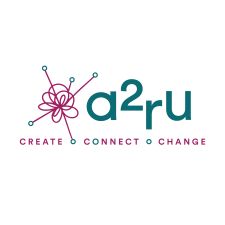Keywords
artificial intelligence, AI, generative AI, text-to-image generator, digital art, glitch art
Abstract
Evoking the spirits of Fluxus scores and art education drawing books from the early 1900s, this instructional art object guides the reader through a series of poetic prompts, designed to investigate the phenomenon of “bad hands” created by generative artificial intelligence. By now everyone has seen the AI-generated images of hands from the uncanny valley. A body of discourse has emerged to discuss “bad hands” in generated images, including their usefulness as a media literacy tool for identifying synthetic images and as evidence of the continued necessity for humans’ artistic abilities. However, these applications may be short-lived as it is only a matter of time before these systems are capable of rendering human hands that are indistinguishable from our own. Before these “bad hands” disappear from view, they might lend artists/educators a hand – a chance to unlearn how we think about machine learning. By learning to create intentional “bad hands,” these creative prompts not only reveal the ways these systems have defined “bad” and “hands,” but also equip us to interrogate the definition of "human" hiding inside of its mysterious black box.
Creative Commons License

This work is licensed under a Creative Commons Attribution 4.0 International License.
Recommended Citation
Keyes, Oscar K. and Hyland, Adam
(2023)
"Hands Are Hard: Unlearning How We Talk About Machine Learning in the Arts,"
Tradition Innovations in Arts, Design, and Media Higher Education: Vol. 1:
Iss.
1, Article 4.
DOI: https://doi.org/10.9741/2996-4873.1004
Available at:
https://digitalscholarship.unlv.edu/tradition_innovations/vol1/iss1/4
Included in
Art Practice Commons, Digital Humanities Commons, Interdisciplinary Arts and Media Commons



